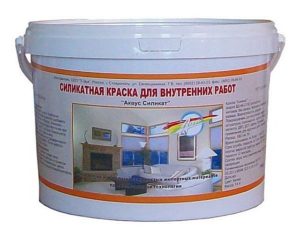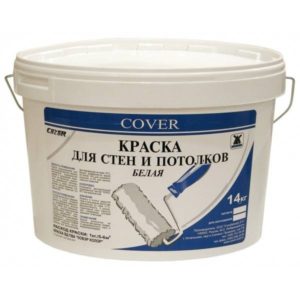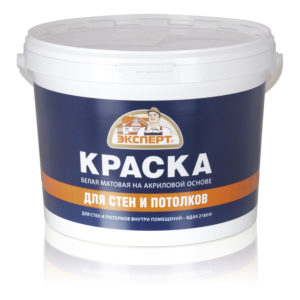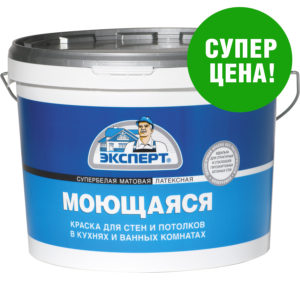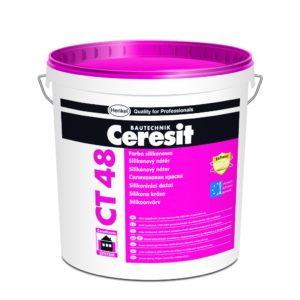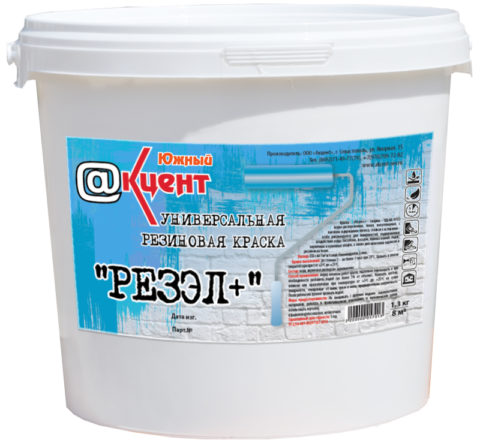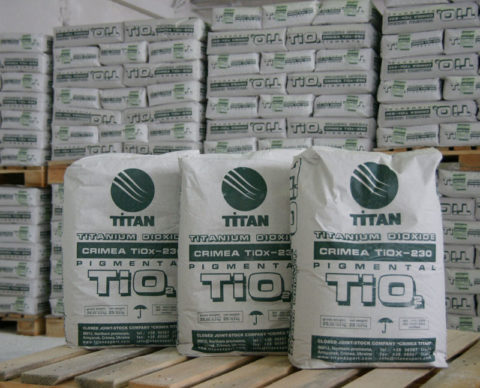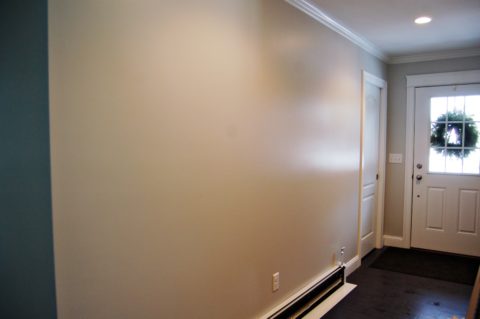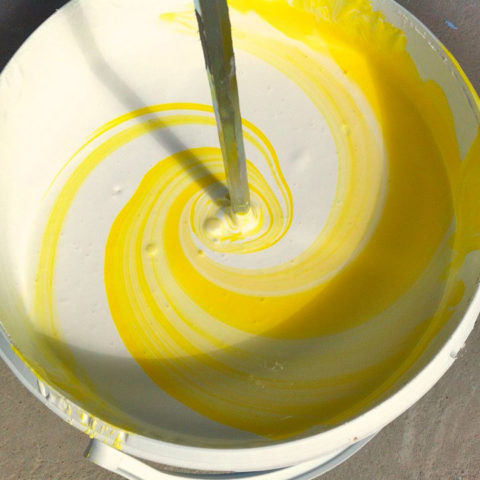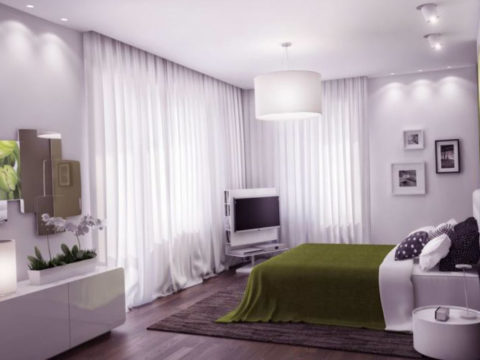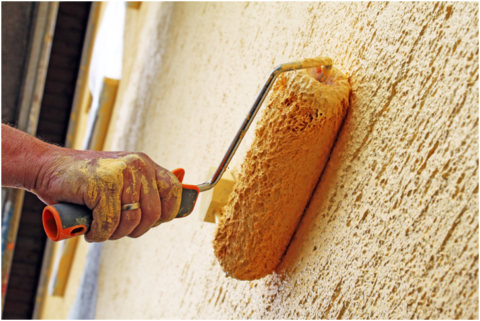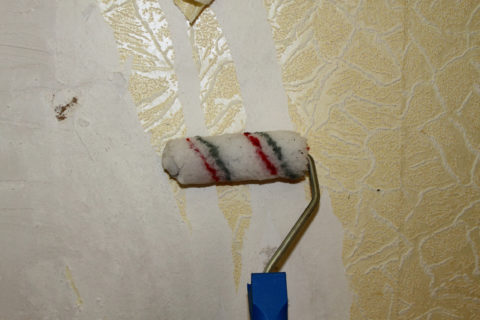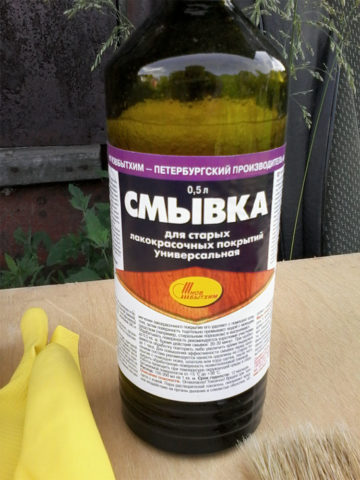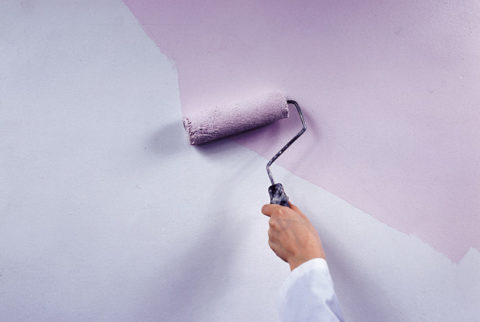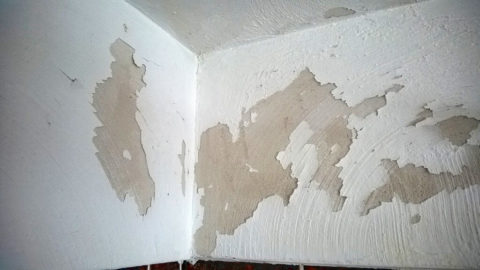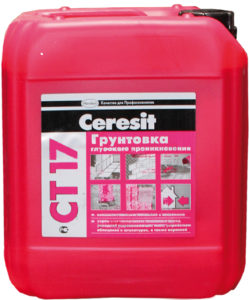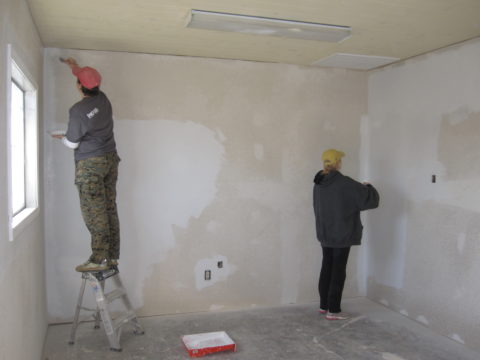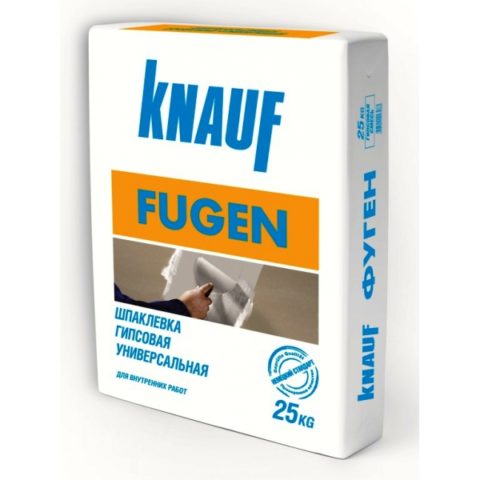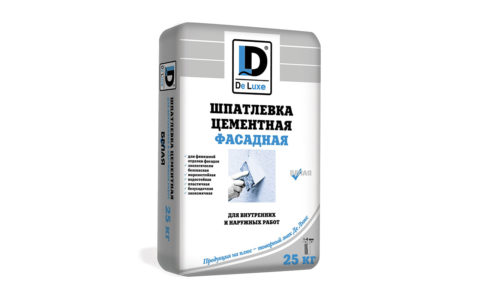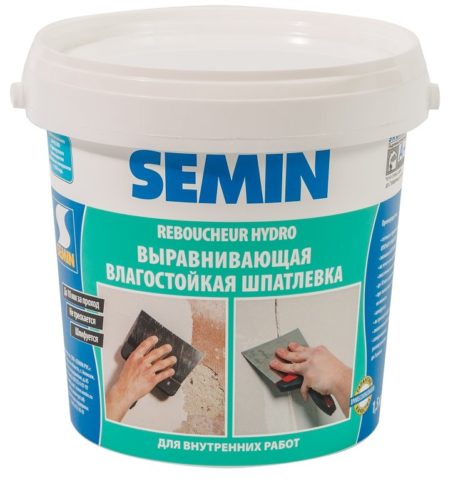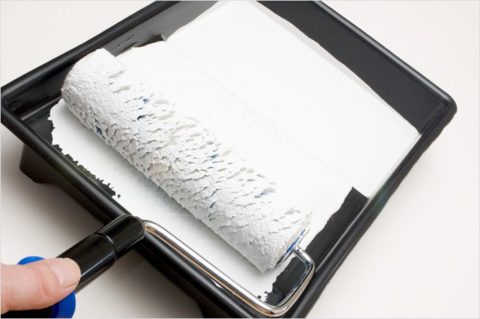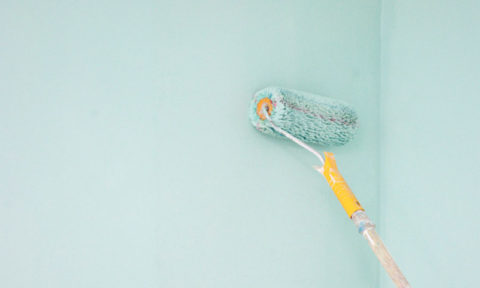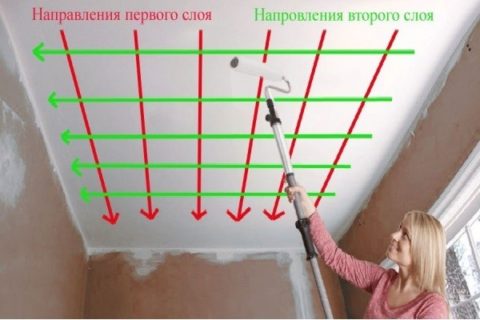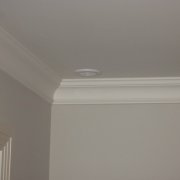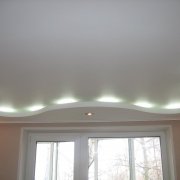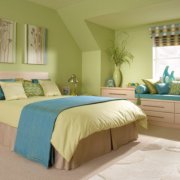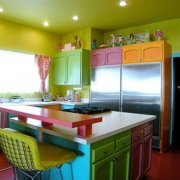How to paint a wall with water-based paint: from choice to application
Today we have to figure out how to paint a wall with water-based paint, and by what signs it is worth choosing it for this work. In addition, we will discuss the preparation of walls for finishing, and the tools used for painting. So, on the way.
The content of the article
How to choose
Water emulsions differ among themselves:
- Composition, primarily - film-forming base;
- Color tint (SeeHow to paint: choose an option).
We’ll clarify: as a rule, paint is sold in white and tinted with water-soluble pigments at the request of the buyer. Of course, the choice of color is a matter of taste; however, the general principles of this choice are still worth mentioning.
Structure
Which water-based paint is best for walls in terms of performance?
Here are the main types of modern water emulsions with their key properties.
| Picture | Description |
| Mineral: base - slaked lime or Portland cement. Differ in cheapness and minimum wear resistance. Advantage - high resistance to stably high humidity. Due to the short service life of the coating, they have almost left the Russian market to date. | |
| Silicate: base - water glass. The long term of operation is combined with good resistance to dry abrasion and extremely low - to humidity. | |
| Polyvinyl acetate - based on PVA glue. Wear resistance and moisture resistance - at an average level; can be used in moderately humid rooms. | |
| Acrylic paints They are made on acrylic resins and are characterized by medium resistance to dry and high - to wet wear. In both respects, all the dyes listed above are noticeably superior. | |
| Synthetic latex dyes can be used in bathrooms and bathrooms. They tolerate wet wear relatively poorly, and therefore are not used for kitchens, where it is often necessary to wipe off splashes of grease and other dirt from the walls. | |
| Silicone emulsions are the ultimate solution: the maximum price (up to 250-300 rubles per kilogram) is adjacent to the maximum resistance to any type of wear (manufacturers guarantee up to 5000 wet cleaning cycles). |
A curious fact: on the basis of synthetic (acrylic) latex, the so-called rubber water paint is produced, which at least is not inferior to the consumer properties of silicone. Suffice it to say that the author used it to paint the plywood steps of a street staircase. For three years in the scorching Crimean sun, the coating has retained its appearance and impermeability to water.
In small text
Manufacturers rarely advertise the composition of white, which are part of the white dye. Meanwhile, it depends on him how long the water-based paint for walls will retain its appearance: how to choose it by this parameter?
Very simple:
- If zinc white is a part - turn away and move on. This coating will inevitably change color in the next 2-3 years. In addition, zinc oxide ZnO is toxic;
- In contrast, titanium dioxide TiO2 is harmless and retains a snow-white color for unlimited time.
It is worth clarifying: the massive use of zinc oxide in the manufacture of paints and enamels, was completed about a decade ago. Now zinc whitewash can be found only in extremely cheap paints of little-known manufacturers.
Colour
Here are some useful tips, one way or another regarding the choice of color, texture and tinting of paint:
- Glossy texture emphasizes the smallest surface defects, so it should be chosen only if the pre-finishing of the walls is absolutely flawless. But the gloss visually expands the space of the room due to the partial reflection of its interior;
- Matte paint, on the contrary, conceals minor irregularities, and makes small surface obstructions invisible;
- Any tint paint will complicate subsequent repairs. Re-getting the same shade is almost impossible with manual mixing of paint with pigment, and difficult enough for computer tinting;
Consequence: if this does not contradict your design concept, paint the walls white. In this case, any potholes and scratches can be masked with an ordinary acrylic putty.
- If you still decide to tint - mix paint with pigment with a margin for repairs. We repeat: you will not get the same color again;
- For a small room it is better to prefer light colors. They will visually expand the room. The dark walls with a light ceiling will make the room, on the contrary, narrower, but will make it appear taller than its actual size;
- When choosing a color do not forget the basic rule of design: in one room should not be more than three primary colors, otherwise it will look annoyingly colorful. Shades of the same color, as well as black and white, do not count.
Foundation preparation
Before you paint the walls with water-based paint, they need to be prepared for painting.
The wall should be:
- Perfectly smooth;
- Durable (without crumbling or exfoliating coatings);
- Clean (no dust and grease stains);
- With moderate absorbency. The glossy non-absorbent surface of the enamel simply will not hold the emulsion of water, and excessively absorbent cement plaster will require an exorbitantly high paint consumption.
Preparation of the foundation involves several stages.
Removing old coatings
How to remove old coatings from the walls?
- Paper wallpaper: soaked with plenty of water and removed from the wall with your own hands or with the help of a wide spatula;
- Lime whitewash: the same instruction applies here - the lime is abundantly moistened with water and cleaned with a spatula.
- Cretaceous whitewash: washed off with plenty of water;
- Nitro, oil and alkyd paints: removed with a steel spatula after processing the wall section with a universal wash.
Is it possible to paint over an old water-based emulsion?
Only if it is made on the same basis as the paint you purchased: acrylic dye can be painted on acrylic, silicate - on silicate, and so on. In this case, the old paint should not differ much from the new color, otherwise, even with a large number of layers on the surface, untidy stains can appear.
How to remove water-based paint off the walls before re-painting?
The answer again depends on its composition:
- How to wash water-based paint from walls if it is made on a silicate or mineral base? Water the wall liberally with hot (with a temperature of 70-75 degrees) water two to three times at intervals of 15 minutes, then remove the paint with a spatula;
- How to remove water-based paint from walls, if it is based on latex or acrylic resins? Apply a deep penetration primer (for example, Ceresit CT17) on the painted surface, and then, after the coating has been soaked, remove it with a spatula or a wire brush.
A moment of pessimism: if these methods did not work - alas, you will find a long and painful grinding of the surface with a grinder or a hand grater.
Removing old coatings ends with dedusting: the wall is swept with a brush, or vacuum cleaned.
Primer
The mineral surface cleaned from old coatings must be treated with penetrating soil (for example, the same CT 17).
The primer will solve several problems at once:
- Glues the remaining dust;
- Improves the adhesion of the surface layers of plaster or putty to the base;
- Positive effect on the adhesion of the paint to the surface;
- Reduce its consumption.
Alignment
If the surface has noticeable irregularities, before painting we have to finish the process - putty. How to putty on a wall?
| Picture | Type of putty |
| Gypsum putty It is used in dry rooms with a significant number of roughnesses and base defects. | |
| Cement putties are used in damp rooms - bathrooms, bathrooms and showers - if the finish is permeable to moisture. | |
| Acrylic ready-to-use putties on mineral substrates putty minor defects at any operating humidity. (Cm. Acrylic putty - types, features, application) |
After filling, the surface is once again treated with a penetrating primer.
Painting
How to paint the walls water-based paint on the prepared surface?
Tool:
- Roller with a fur coat with a medium pile;
- Medium brush with strong pile;
Tip: Pull the bristles of the brush with your hand. There should not be more than one hair in it: the falling-out pile is able to spoil the finish.
- Paint tray.
Paint preparation: it is diluted with water to the consistency of very fat milk (but not more than 10% of the water volume of the paint). Then the dye is thoroughly mixed throughout the volume.
Technology:
- Paint over the inner corners with a brush, then paint the wall planes with a roller (see Consider how to paint the walls with a roller);
- Manufacturers recommend painting in two layers. The author's uniform painting with water-based walls required the application of at least four layers;
- Each layer is superimposed perpendicular to the previous one: the inevitable strips from the roller will be less noticeable;
- Roll the roller in the tray, not on the wall. Otherwise, the stripes on it will become more noticeable;
- The wall is painted in one go over the entire area. A pause is possible only before painting the next wall or the same wall with the next layer. If you let the surface area dry and then paint it over, the overlapping layers of paint will stand out in thickness;
- Before applying the next layer, the previous one should completely dry;
- If you notice an unpainted area when the coating began to dry out - do not tint it. Wait for the next coat;
- Wash the tool, not allowing the paint to dry on it. Lumps of dried dye can spoil the finish, leaving grooves in it;
- How to whiten the walls with water-based paint so that they do not show stripes from the tool? Extremely simple: apply the last coat parallel to the direction of the prevailing lighting (natural or artificial).
Conclusion
We hope that this material will help the reader in the repair of their own housing. You can learn more about how to properly paint a wall with water-based paint by watching the video in this article. Good luck!


